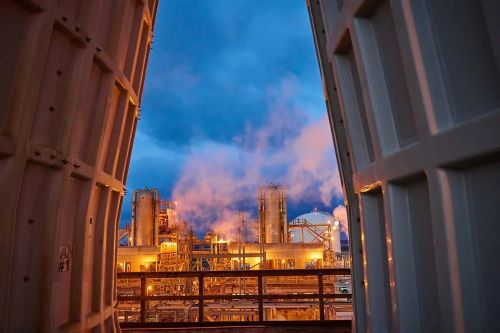Sign up for daily news updates from CleanTechnica on email. Or follow us on Google News!
The Philippine Department of Energy (DOE) is looking to redevelop nine ports scattered across the Philippines to serve as integration facilities that will serve as bases of operations, warehouse materials, and build platforms needed for offshore wind (OSW) development. This is in anticipation of expected rapid growth of offshore wind farms around the country.
This information was released by the Asian Development Bank (ADB) which is working with the DOE to assess the nine ports and develop a plan for their redevelopment. The ADB is providing a grant to fund the study. Reports in the Philippine Star and the Philippine Daily Inquirer say that financing of the redevelopment of the ports will be handled by the port owners and that the DOE is working on a financing plan.
Energy Assistant Secretary Mylene Capongcol told reporters at an energy forum event that the DOE’s partnership with the ADB is to quickly implement Executive Order No. 21 signed by President Ferdinand Marcos, Jr.
According to the World Bank offshore wind report, the Philippines has a technical offshore wind resource potential of 178 GW, with 160 GW suitable for floating foundations and 18 GW suitable for fixed foundations.
Locations identified in the north of Luzon and the seas in adjacent to Mindoro Island are suitable for floating foundations. There are also numerous pockets around the archipelago with areas suitable for floating turbines, but with comparatively low wind speeds.
The largest of these areas is off the south coast of Mindoro, with a technical potential of 53 GW.
Ports Under Study
The nine ports are just the first in over 32 that are located in within the 77 sites so far auctioned and contracted for offshore wind in the Philippines. There are over 500 public and private ports around the country, and of those, 19 are called base ports, which are operated directly by the government.
CleanTechnica recently joined an assessment tour to the Currimao Port in Ilocos Norte to gather details for offshore wind developments in the area. The port is one of two in the region suitable for offshore wind equipment and infrastructure development. Located 458 kilometers (258 miles) from Manila, the Currimao port has the berthing necessary for the large equipment and ships needed by OSW facilities.
Two other ports, this time in the southern Tagalog region just 120 kilometers (75 miles) from the capital city, have also been identified and been evaluated — the Energy Supply Base Port of the Philippine National Oil Company (PNOC) and the possible expansion of the Batangas City Port.
Infrastructure Needed For Offshore Wind
Modification of existing ports or building of new ones is necessary because of the massiveness of OSW projects.
For example, the size of offshore wind turbine blades has been increasing in recent years. Some of the largest offshore wind turbine blades in the world are over 100 meters long. The GE Haliade-X offshore wind turbine has blades that are 107 meters long. This means that each blade is longer than a football field. The Vestas V236 offshore wind turbine has blades that are 115.5 meters long. This makes them the longest offshore wind turbine blades in the world.
The increasing size of offshore wind turbine blades is driven by a number of factors, including the need to generate more power from each turbine and to reduce the cost of offshore wind energy.
Complex Construction Needs Massive Port Infrastructure
OSW construction is a complex and challenging process. It involves transporting and installing large and heavy components in a marine environment. Offshore wind farms are located far from shore to take advantage of the best possible wind conditions, which can make construction and maintenance more difficult and require a significant investment in planning, design, and engineering.
The start of the study phase of the redevelopment of the nine ports is a significant step or the offshore wind industry in the Philippines. The Philippines has the potential to develop 21 gigawatts (GW) of offshore wind energy by 2040. It will also create 10,000 jobs, as per DOE estimates, and will boost the local economy
The redevelopment of the ports is a positive step for the Philippines’ renewable energy sector. The country is committed to developing renewable energy sources to reduce its reliance on fossil fuels and to combat climate change. The redevelopment of the ports will help the Philippines to achieve its renewable energy goals faster.
Have a tip for CleanTechnica? Want to advertise? Want to suggest a guest for our CleanTech Talk podcast? Contact us here.
EV Obsession Daily!
I don’t like paywalls. You don’t like paywalls. Who likes paywalls? Here at CleanTechnica, we implemented a limited paywall for a while, but it always felt wrong — and it was always tough to decide what we should put behind there. In theory, your most exclusive and best content goes behind a paywall. But then fewer people read it!! So, we’ve decided to completely nix paywalls here at CleanTechnica. But…
Thank you!
Tesla Sales in 2023, 2024, and 2030
CleanTechnica uses affiliate links. See our policy here.





